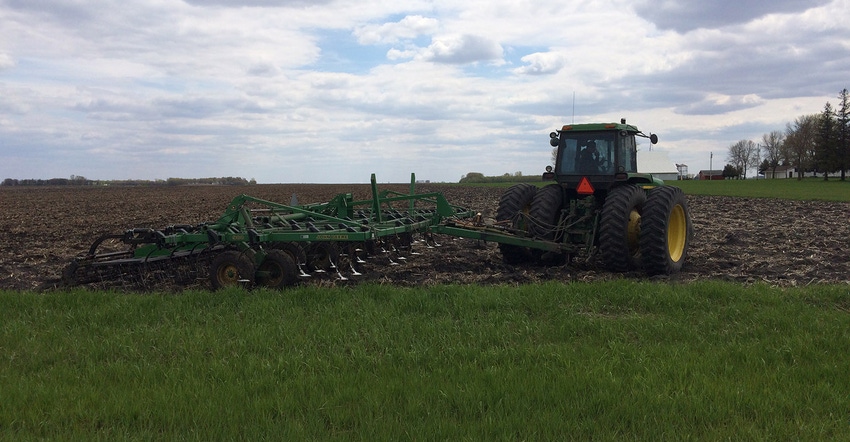
May is nearly halfway over, but the 2019 corn crop has a long way to go to get into the ground, according to the latest USDA Crop Progress report, out Monday afternoon.
Just 30% of this year’s corn crop has been planted as of May 12, according to USDA. That landed well below the average trade guess of 35% (but individual guesses varied widely, from 29% to 41%). Planting pace is also trending far behind 2018’s rate of 59% and the five-year average of 66%.
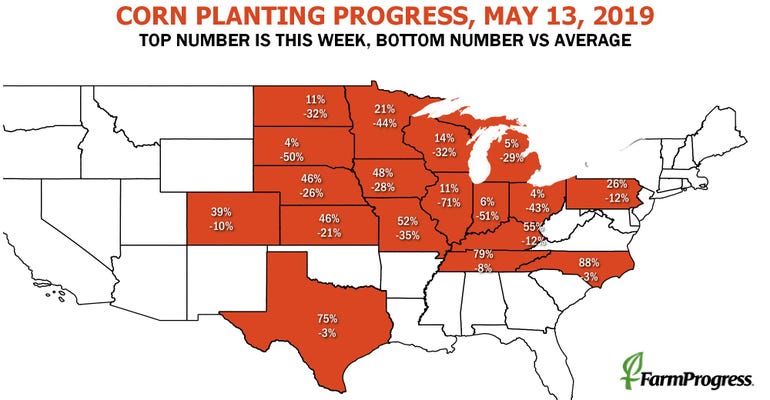
Readers who have kept up with Farm Futures’ Feedback From The Field column may not be surprised by the latest numbers, however, according to senior grain market analyst Bryce Knorr.
“Farmer comments we’re getting continue to be an accurate predictor of planting progress for corn and soybeans,” he says. “Growers continue to voice their concerns, which the trade has been relatively slow to adopt. That may change after today’s report, which makes it highly unlikely 85% will be planted at the end of this week, the benchmark for trouble in many traders’ mind.”
Farmers can plant massive amounts of corn – upwards of 35% or more of the entire crop – in a single week, if weather is ideal. But this coming week is unlikely to see that sort of progress, Knorr says.
“The window open this week won’t last long and soils are saturated, with more rain in the forecast,” he says. “The eastern Corn Belt could have a better shot at making up some ground, but it’s cold and wet there. Illinois could be the key because farmers there can really roll if given a chance. But they’re so far behind that even the farmers in “racehorse flats” will have to be mudders.”
There are three implications to the current sluggish pace. First, farmers will tend to plant fewer acres than USDA planting intentions back in March. That is already a given, Knorr says, because the agency’s survey was completed before the so-called “bomb cyclone” wreaked havoc through the Plains earlier this spring.
“Second, yield potential tends to be lower,” he adds. “It’s not dramatic, but it could be 1.5 to 4 bushels per acre.”
Third, late-planted fields are more likely candidates for abandonment, Knorr says.
“Late planting can lead to late development of the crop, which may force some ground to be cut for silage rather than harvested for grain,” he says.
Add it all up, and if 75% of the crop has been planted by May 19, expect a 442-million bushel cut to yields. If 65% of the crop has been planted by then, that potential yield cut blooms to 906 million bushels.
“That said, just because the crop’s potential is less doesn’t mean it can’t exceed those expectations and be above average,” Knorr says. “All the soil moisture tends to increase yields and keep temperatures cooler, which is what some of the forecast models are saying.”
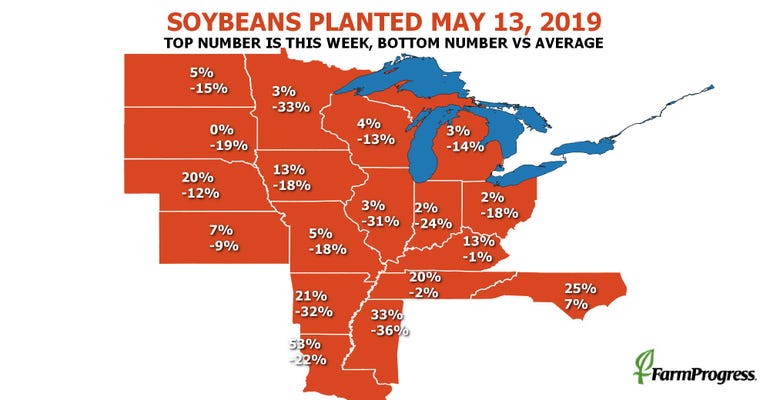
Not to be outdone, soybean planting pace is also far below average after reaching just 9% as of May 12. That’s compared to 2018’s pace of 32% and the five-year average of 29%. Trade estimates anticipated USDA to report progress of 15% so far.
“Soybean planting progress was even slower than I thought, and as with corn I had the lowest estimate in the trade today,” Knorr says. “Planting progress isn’t as much of an issue with soybeans. But the problems farmers are having in the Delta could mean some ground may not get planted there either.”
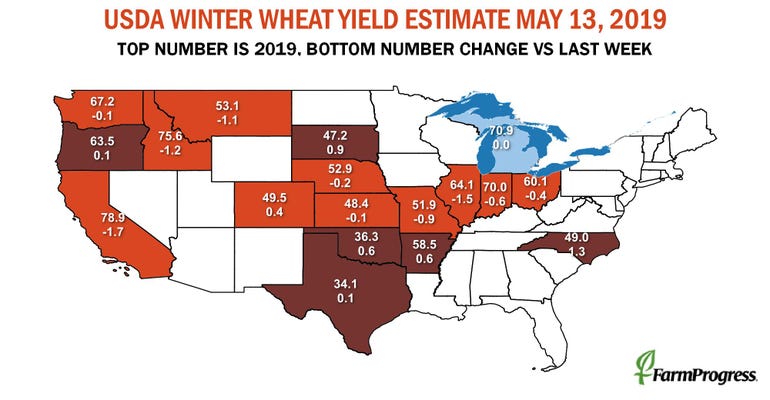
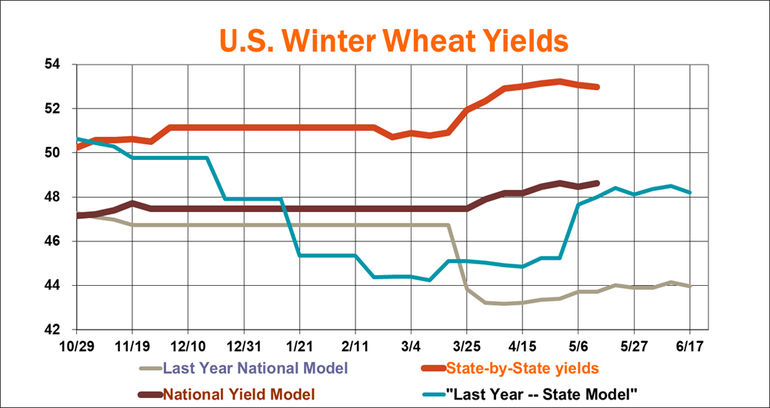
For winter wheat, USDA reported 15% of the crop in excellent condition (up from 12% the prior week), with another 49% of the crop in good condition (down from 52% last week). The remainder of the crop – 28% rated fair and 8% rated poor or very poor – is all unchanged from a week ago.
Forty-two percent of the crop is now headed, which is slightly behind 2018’s pace of 43% and moderately below the five-year average of 54%.
“Wheat conditions continue to improve, adding a little to yield potential according to ratings, though conditions declined in the I-70 corridor,” Knorr says. “The midpoint of the two models based on the ratings is at 50.8 bushels per acre, which is a half-bushel more than USDA found it its first survey of growers released Friday.”
The biggest threat to the crop now is if it doesn’t stop raining – though lack of warm temperatures could offset some of this damage, Knorr adds.
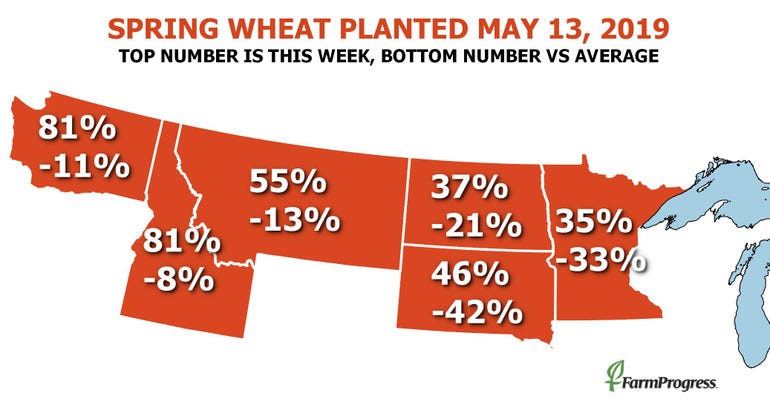
About the Author(s)
You May Also Like






